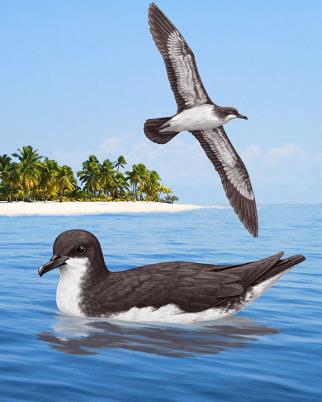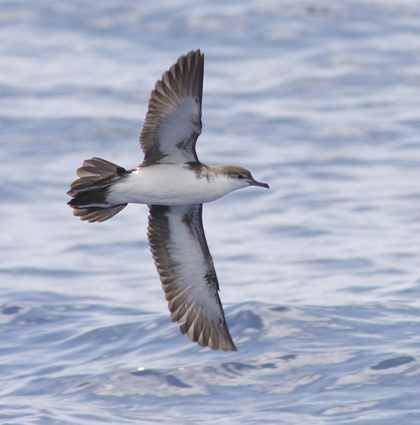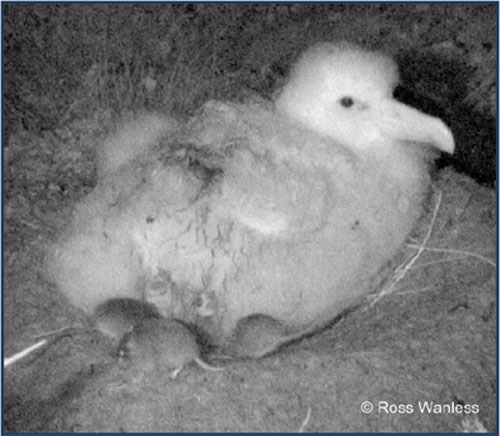Miguel Ferrer (Applied Ecology Group, Estación Biológica de Doñana, Seville, Spain) and colleagues have published in the journal Waterbirds on sexing Black-browed Albatrosses Thalassarche melanophrys by bill measurements.
The paper’s abstract follows:
“To provide an easy and reliable work tool to identify the sex of individuals, adult Black-browed Albatrosses (Thalassarche melanophrys) (n = 31) were weighed and measured, and the sex determined using DNA analyses. Stepwise discriminant analysis showed upper bill depth and weight to be the best predictor variables for sex determination. This model classified correctly 95.0% of the males and 81.8% of the females (overall success was 90.3%). Additionally, a single measure discriminant analysis of upper bill depth was developed that is able to separate sexes using a threshold upper bill depth of 29.87 mm, with values above this point being males and values below it being females.”

Black-browed Albatrosses engage in preening, photograph by Aleks Terauds
Reference:
Ferrer, M., Morandini, V., Perry, L. & Bechard, M. 2016. Sex determination by morphological measurements of Black-browed Albatrosses (Thalassarche melanophrys) Using Discriminant Analysis. Waterbirds 39: 295-299.
John Cooper, ACAP Information Officer, 28 October 2016

 English
English  Français
Français  Español
Español 



